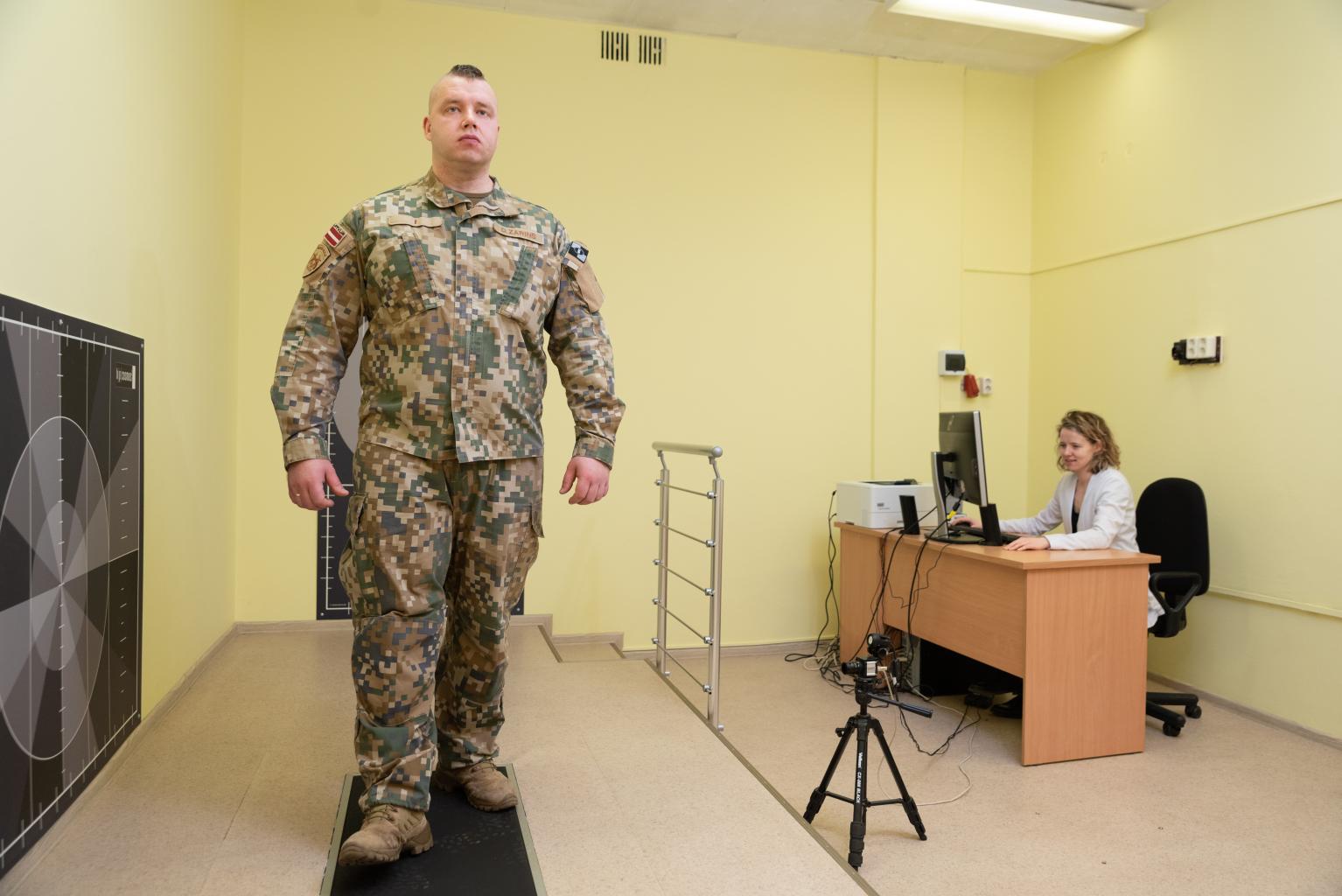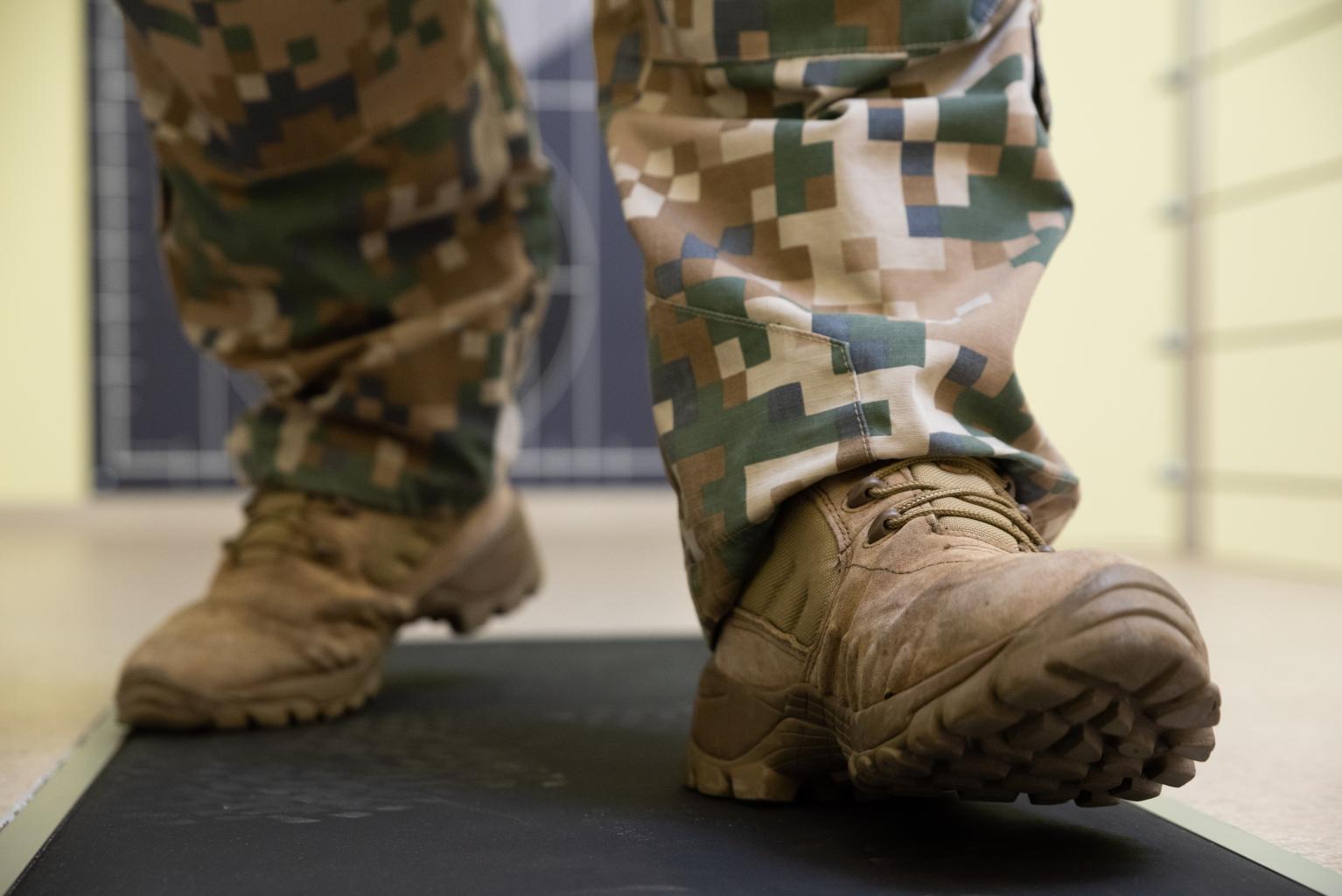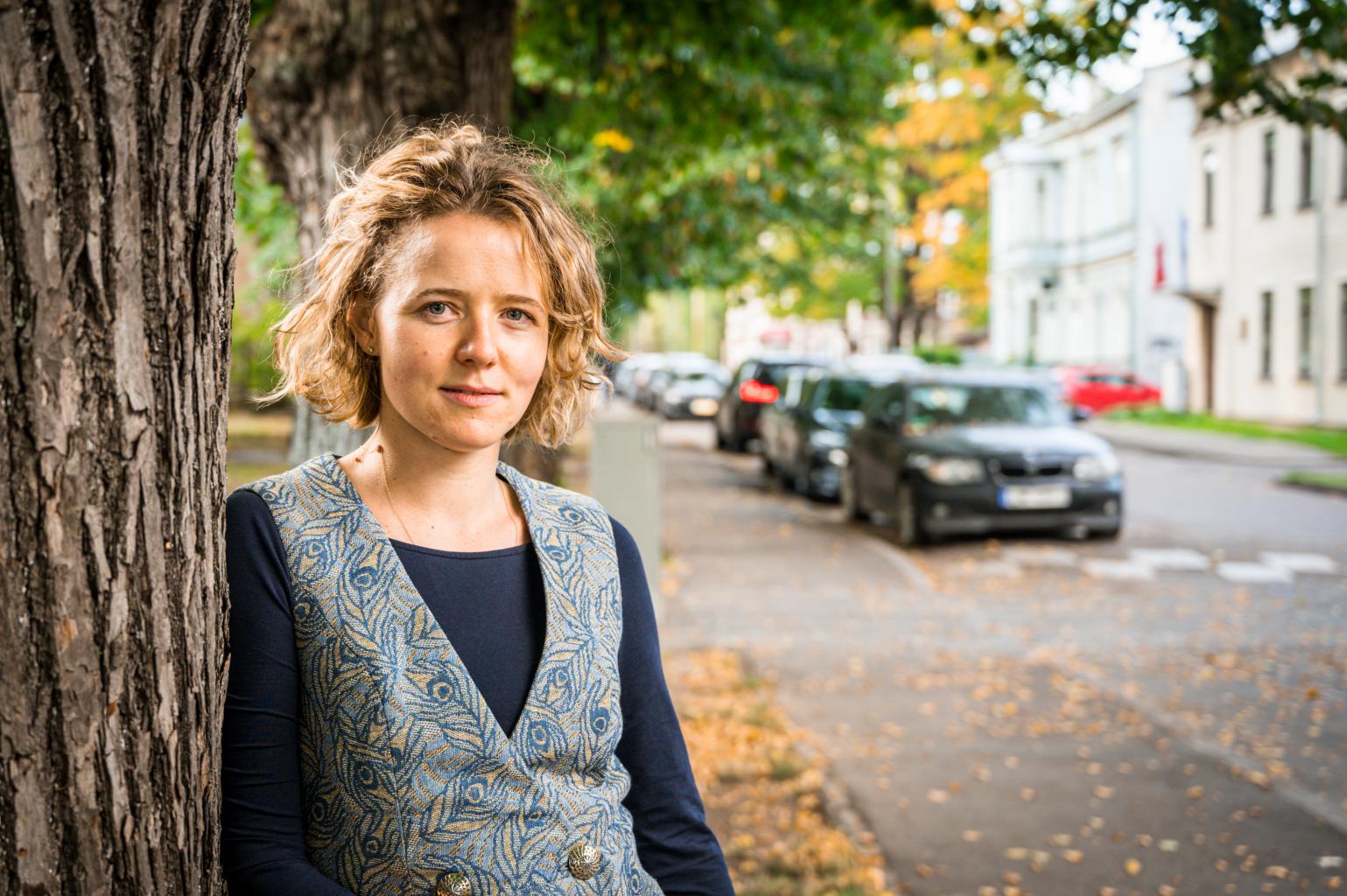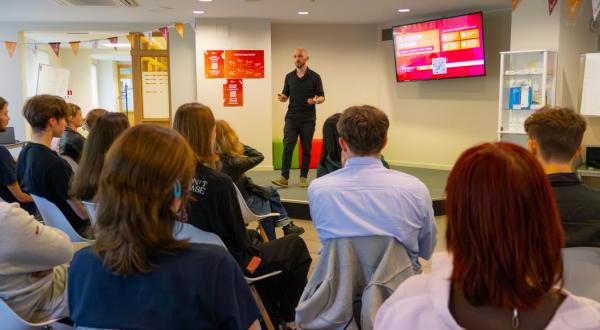RSU Doctoral Student Studies Connection Between Injuries and Footwear in the Latvian Military
The soles of the feet are just like the foundation of a house – if they are weakened, the house will be unsteady, says Darja Ņesteroviča, a researcher and technical orthopaedist at the Rīga Stradiņš University (RSU) Military Medicine Research and Study Centre. While working in a clinic, Ņesteroviča observed that several military patients had similar overload injuries. Although soldiers are a widely studied population, she was not able to find an explanation for what she saw in academic literature, so she set out to research this question herself.
While developing her doctoral thesis, Ņesteroviča studied the frequency of overload injuries in feet among soldiers from the National Armed Forces (NAF) and analysed the connection to habits of using military footwear and peculiarities in foot structure. Her work is a part of a wider international study on the reduction of musculoskeletal injuries in the armed forces of NATO member states. The research has been able to attract the attention of the industry, and Ņesteroviča just received a prize in the Defence Industry’s Annual Awards in Education and Research.

Musculoskeletal injuries are the main cause of medical disability and premature demobilisation of military personnel in peacetime. What kind of injuries are they?
We are talking about all types of everyday overload injuries that affect the torso, arms and legs. Lower extremity injuries from the hip down, which are the focus of my research, account for about 70% of all musculoskeletal injuries in soldiers.
This is a topical issue in the medical service of the armed forces of every NATO member state, since musculoskeletal injuries reduce a soldier's efficiency and require additional budget resources.
Together with researchers from the USA, Belgium, Canada, the UK, the Netherlands, Slovenia, Spain and Germany, we are currently conducting research as part of the project Reducing Musculoskeletal Injuries, which will result in practical recommendations for reducing this type of injuries.
As part of the project, we conduct unified analysis of the incidence of overload injuries, determine risk factors and usefulness of preventive measures. My contribution is to carry out specific calculations of foot and shin injuries, to study the effect of military shoes, as well as to carry out a detailed analysis of biomechanical factors of gait in the NAF Ground Forces. This is the first time that such study is being conducted in Latvia, and I hope that it will initiate a medically reasoned discussion on physical load as applies to soldiers and various strategies of selecting military shoes when planning procurements.

Is studying soldiers easy or difficult?
Soldiers are a relatively closed and inaccessible population. For a researcher, getting access to a soldier requires coordination on many levels. The research, therefore, requires very meticulous planning. At the same time, my experience shows that as soon as a researcher gets access to a soldier, everything goes smoothly, because soldiers are very precise, agile and interested in maintaining and improving their health. Being strong guys, they don't always like to talk about their problems, sometimes they even hide them, but when they realise that everything they say is confidential, they become very interested in solving functional disorders.
The process itself is not painful – my exams include walking on a pressure-sensitive mat both barefoot and in boots. I work at the gait analysis laboratory that has been jointly established by the RSU Department of Rehabilitation and Riga East Clinical University Hospital. In total, I have obtained data from 227 soldiers at their annual medical examinations, and have conducted functional analysis on 66 soldiers.
The average duration of service among the soldiers involved in my study is 8 years, which means that they have already sustained certain injuries. The daily pressure and load is high – soldiers can, in a way, be compared to athletes as they have to stay in good shape, but a soldier, unlike an athlete, does not progress in one specific direction. A soldier has to be prepared in general.

How did you become interested in soldiers?
[Laughs.] It all started by chance. Several soldiers with similar injuries to the feet and shins (plantar fasciitis, medial tibial stress syndrome, stress fractures, etc.) came to visit to me at the health center, Veselības Centrs 4.
Soldiers are a widely studied population, but I did not find answers specifically related to overload injuries caused by military footwear in any academic literature. I understood that I had to study this myself, because I like to justify actions scientifically, such as prescribing a certain medication, or orthoses.
My nascent interest coincided with the establishment of the Military Medicine Research and Study Centre at RSU at the end of 2017. The Centre focuses on soldiers from various angles: neurologist Ainārs Stepens, the Head of the Centre, is currently carrying out neurological research; psychiatrist Māris Taube is studying depression; internist Kārlis Rācenis is studying post-traumatic infections.
You still have your graduation and the defence of your doctoral paper ahead of you – what conclusions can you already draw, however?
I am currently in a detective-like phase – I know what I am looking for, but the big picture is not yet clear to me, and I cannot yet verify anything until the statistics have come together. It is not easy to get ready for data analysis, because it requires a lot of patience. It takes me about half an hour to measure the angles and to analyse the video of one soldier’s gait. So far, in analysing how comfort their shoes are I have noticed that soldiers have a tendency to choose the wrong size.

How simple!
It's actually not that simple.
People do not know how to choose shoes that fit correctly. This is a big problem in society in general. I see it all the time working in the clinic – shoes are too short, too narrow... Less frequently, the problem is that the shoes are too big.
When studying soldiers, we are looking at lace-up boots, of course. They are very similar regardless of the manufacturer. Consequently, the results of my work will be easy to use in other countries’ armed forces.
So far, it has also been observed that soldiers tend to ignore such seemingly small details as the condition of the skin on their feet – chronic blisters or heels cracking is often a first sign that something is wrong with the foot as a whole.
Getting blisters after marching is understandable, but chronic blisters can indicate overload that can lead to a stress fracture that will make the soldier have to "drop out" of service for a couple of months. Preventing such a fracture is beneficial to everyone. Analysing the soldiers’ gait, I am currently creating an injury risk profile to highlight what needs to receive more attention during the annual examination.
As a researcher, it would be great if I could return to the same soldiers in five or ten years. It is my dream to conduct a cohort study where the same group is examined over a long period of time! I learned to navigate statistics when I was working with the data register at the Centre for Disease Prevention and Control. Since then, I have understood the excitement that lies within research – I am fascinated by how data comes together to for one cohesive picture!

What are the most common ways in which all Latvians cause injury to their feet and soles?
Your soles are like the foundation of a house. The soels of the feet are the first point of contact with a surface – if they touch it correctly, the shock is absorbed, if incorrectly, it resonates in the spine, which will start to hurt in the long run. That is why the choice of shoes is very important, and I have already mentioned that choosing the wrong shoes is very common. People wear tight and uncomfortable shoes because they like the way they look. In Latvia, by the way, this is also characteristic of men. Athletes are usually wiser when it comes to choosing shoes because their feet are their tool.
Shoes greatly affect how the sole of your foot moves. Europeans have been walking in shoes for centuries, and soles are getting bigger and lazier because of that. They need to be strengthened by exercise, yoga, or zumba – anything, in fact, other than sitting in an office or car.
It is also very important to monitor the condition of the skin of your feet and your toenails. Cracked heels, corns, warts, and fungus infections are problems that need to be addressed before they start to interfere significantly. Unfortunately, in Latvia, people often come to a specialist too late, when you already need a multi-professional team to solve a problem – not only a technical orthopaedist, but also a dermatologist, podiatrist, surgeon and physiotherapist.
Darjas Ņesteroviča's CV in brief
- 2017 - present: RSU Medicine doctoral study programme
- 2013 - 2015: RSU Public Health master study programme
- 2009 - 2013: RSU Orthotics and Prosthetics bachelor study programme
Related news
 Develop your business skills and bring ideas to life with the B-Space incubation programmeFor RSU Employees, For High School Students, For Students, Innovation
Develop your business skills and bring ideas to life with the B-Space incubation programmeFor RSU Employees, For High School Students, For Students, Innovation


